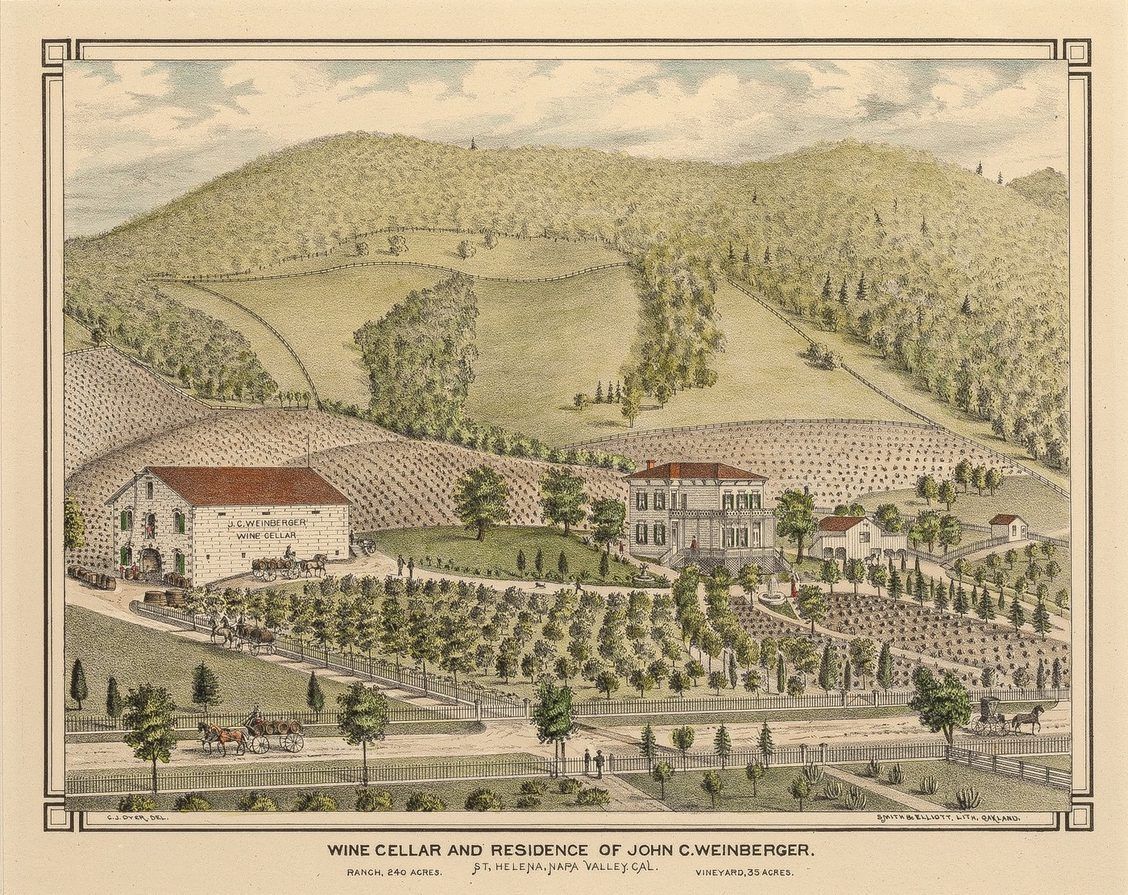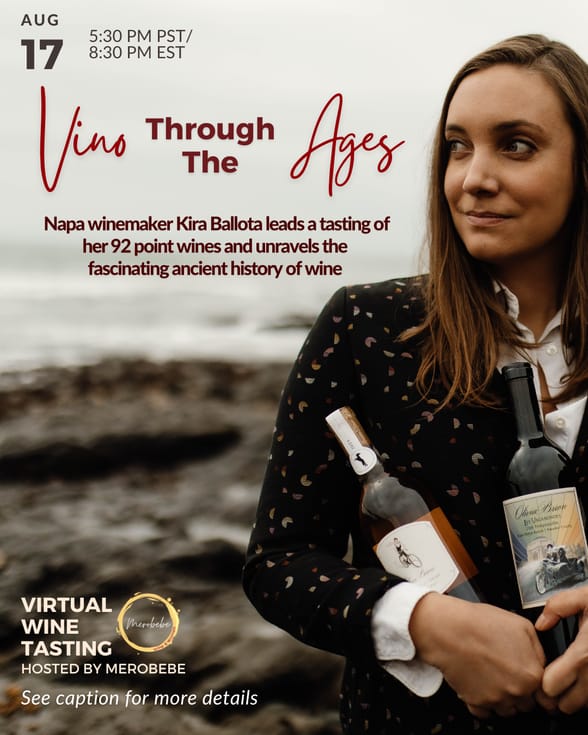
Happy Wine Wednesday!
And Happy belated Albariño Day!
Unlike some other “hashtag holidays,” Albariño Day is actually rooted in history to the Fiesta del Vino Albariño. This massive wine festival, which dates back to 1953, began after Bernardo Quintanilla and Ernesto Zàrate challenged each other to determine the best wine of 1952. Albariño Day was born a year later on August 1st, and is now celebrated with the annual festival which takes place over the first week of August in the coastal town of Cambados, Galicia (an autonomous community in the northwest corner of Spain). With concerts, workshops, parades, and plenty of partying, the festival celebrates the beautiful white wine we’ll be talking about today.
Then, we’ll do a 180 and learn about California’s first winemaker, Hannah Weinberger, whose winemaking story starts with a murder…
So pour yourself a glass and let’s get our wine nerd on!

Albariño
Seafood, Citrus, and the Celtics
This refreshing white wine, considered one of the best wines for seafood, is thought to have originated in northeastern Portugal where it’s been growing for centuries and is known as alvarinho, where it’s predominantly used as the main varietal in Vinho Verde, a white blend.
In the past decade, the varietal has become most known for the delicious and dry table wines coming from Spain – specifically Rías Baixas, a beautifully rugged and green region along Spain’s northwest coastline. Unlike most Spanish and European wines which are often named after the region they come from, albariño (al-bah-REE-nyo) is just…albariño.
So let’s talk a little bit more about Rías Baixas.

Image courtesy of Venture Sail
As you can see from the photo, this is one of the most stunning wine regions. It almost looks like Ireland and Wales, but with steep hills of eucalyptus forests, orange trees, and thick coastal clouds over the vineyards. The region has deep Celtic heritage, including the traditional local instrument (gaita) which is similar to the Scottish bagpipe!
The region gets its name from the Galician word, rías, which refer to the narrow estuaries that slice into the baixas, the southern part of Galicia. Outside of eating seafood and drinking wine, visitors of Rías Baixas can enjoy water sports like scuba diving, surfing, and water skiing, or mountain biking and climbing along the mountains. Or you could, you know, enjoy the wine and work on your tan while enjoying the view on a boat…
In a country typically known for its red wines (like tempranillo and Rioja), this small region located just above Portugal is known for its white wines and only became more well known in the 90’s after Spanish white wines began a new era with a technological revolution.
Many, many years ago, the Galegos were for the most part poor fishermen who spent very little money making wine. They drank all of it themselves, so there was no reason to improve it for commercial purposes anyway. One example of the more traditional and rudimentary equipment used is an old wooden press that is now displayed in a museum at the bodega Santiago Ruiz. The press and the other simple wine making tools there look old because…they are. They were used centuries ago, but were also being used until the ‘80s as much of modern winemaking made its way to the region quite late.
In the late 80’s and early 90’s, the use of temperature-controlled stainless steel tanks and other modern technology and equipment was implemented, and the quality of white wines skyrocketed. Rías Baixas was among the regions leading the way for white wines during this technological revolution, specifically for albariño.
So: Albariño. Let’s dig into it.
Remember, this is the perfect wine for seafood. It’s light. It’s crisp. It’s rarely aged in oak and is best consumed when it’s still young.
When smelling and tasting the wine, you’ll get vibrant notes of zingy lime and grapefruit, honeysuckle, peach, and kiwi. Maybe some almond, spice, and vanilla notes. Even though it can be floral, it’s not as aromatic (or minerally) as a riesling. Winemakers typically handle the grapes minimally to preserve freshness, although some producers are now experimenting with barrels for a more full-bodied and oaky style. If you find an oaked albariño out there, I’m curious to hear what you think of it!
Outside of Spain and Portugal, you’ll find some albariño in California, Argentina, Chile, and Brazil in cooler, coastal regions, although it hasn’t gained large-scale popularity in these areas. The grape is actually pretty difficult to grow and is naturally low-yielding, so you’ll never really find this as a two-buck chuck (and if you do, I’d probably stay away from it…). They’re not as expensive as famous French wine, but certainly not the cheapest white wine you’ll find – although it’s well worth the price! Today, only wines in Rías Baixas that pass the strict tasting test by a wine commission called Consejo Regulador can be labeled as “Rías Baixas,” so you’ll know you’re getting a high quality wine if you see that on your albariño.
Pair this zippy, acidic wine with light fish and meats with leafy herbs. Think fish tacos with cilantro and lime. Oysters. Shrimp cocktails. A tuna salad or chicken empanada. Maybe a seafood paella or risotto.
Ok, now that I’m drooling, it’s time to switch gears entirely and go to…

Hannah Weinberger
California’s First Female Winemaker
Hannah Elizabeth Rabbe was born in Indiana in 1840, but we’re going to first talk about her husband, John C. Weinberger, as we don’t know much about Hannah’s childhood.

Image courtesy of the St. Helena Public Library
J.C. had been a confectionary apprentice in Bavaria before immigrating to New York when he was around 18 years old. After moving to Cincinnati, Ohio (where he would meet Hannah) and then Indianapolis, J.C. began a fruit and nursery business while learning about wine making.
After taking a trip to California and falling in love with the Napa Valley, he returned the following year to purchase a 240-acre property in St. Helena for only $3,000 from Charles and Carolina Krug (of Charles Krug Winery) in 1869.
He promptly begins working on a two and a half story stone masonry winery and planting grape vines.
A couple of years later, he returns to Ohio to marry Hannah, his second wife, and they return to Napa together to continue building the winery.

An 1852 sketch of the property. Image courtesy of Abe Books.
In 1876, The J.C. Weinberger Winery was finally finished and is said to be the first stone wine cellar in Napa. With 35 acres of vineyard planted by this time and additional grapes purchased from other growers, the winery produced about 50,000 gallons of wine and was also one of the first commercial producers of grape syrup! Outside of the vineyard, J.C. also gets a job as the director of the Bank of St. Helena and the couple continue growing their winery while raising their 5 children.
Life was good, until…
In 1882, an employee named William J. Gau fell in love with and began making unwanted advances towards their eldest daughter, Wilhelmina (aka “Minnie”), from J.C.’s first marriage. Gau even went as far as falsely announcing that they were engaged in a San Francisco newspaper (wtf?), prompting J.C. to promptly fire the creep. Gau became angry, and would linger around the vineyard making threats and just generally being an asshole.
Finally, on March 21, an upset Gau extracted revenge by sending a fake telegram to J.C., pretending to be a friend and luring him to a nearby train station. Once J.C. arrived, Gau walked up to him and shot him twice in the head, He then turned the pistol on himself, committing suicide in front of everyone on the train and the platform.
(Holy shit. When is Netflix making a docu series about this?)

The J.C. Weinberger Winery. Photo courtesy of The Napa Valley Wine Register
After Hannah’s husband was murdered, she not only took over the operation of the winery and vineyards, but also took her late husband’s place as a director at the Bank of St. Helena. At a time when women couldn’t vote and were discouraged from working (much less own a business), Hannah took over the winery and became the first female winemaker in California to own and operate a winery! Just like her husband, she became a pioneer in the Napa Valley wine industry and successfully grew the winery under her management.
By 1889, she had increased wine production to 100,000 gallons, also producing 5,000 gallons of brandy. That same year, Hannah traveled across the Atlantic with her cabernet sauvignon to make an appearance at the World’s Fair in Paris, a prestigious wine competition featuring mostly French and other European winemakers. Hannah’s cabernet sauvignon won a silver medal, making her the only California female winemaker to do so in the wine competition! The award and publicity not only increased the reputation of her winery, but of Napa Valley wine overall.
Hannah continued to run the winery with her uncle, Colin T. McEchran, until his death in 1909, at which point her son J.C. Jr. took over as the winemaker. The mother and son duo continued the success and growth of the winery until Prohibition in 1920. At that point, she had been running the operation for 38 years.
The wine pioneer herself lived to the ripe old age of 91, passing away in May of 1931. It would be another 50 years before another female winemaker became a main figure in the wine industry.

William Cole Vineyards. Photo courtesy of The Napa Valley Wine Register
While the property passed through a few different families after Hannah’s death, it didn’t reopen as a winery until 2004 where it is now the home of William Cole Vineyards, and was then listed on the National Register of Historic Places in 2015.
What a story.

Get a wine-related movie or book pairing for your weekend.
Today’s pairing is our upcoming virtual wine tasting event, Vino Through the Ages on Thursday, August 17th at 8:30 pm ET/5:30 pm PT
I’ll be joined by Napa Valley winemaker Kira Ballotta, one of our previous women in wine, who will be leading a tasting of two of her 92 point wines before diving into the fascinating ancient history of wine!
We’ll be tasting the 2021 Olivia Brion White Blend “Taquine” ($30) which received 92 points from Wine Enthusiast for their 2019 vintage, and the 2019 Cantadora “The Healer” Mourvedre ($50), which received 92 points from Wine Enthusiast and 94 points from the Sunset Magazine Competition.

Plus, Kira is sharing a very rare and special discount for our event (thank you, Kira!). You can use the code WINEHISTORY15 to get 15% off the wines! I’m putting in my order for a couple bottles of each right after I hit send…
Even if you’re not able to purchase the wines, feel free to grab a bottle of something you like and come listen to Kira and get your wine and history nerd on!
Now go get some fish tacos and drink some Albariño!
And somehow try to process the fact that it is already August… Summer will be over before we know it, so we have to take advantage of our rosé and white wine days by the pool while we can!
See you next Wednesday,
Megumi
Have questions or feedback? Want to suggest a wine topic, woman in wine, or vinotainment pairing? Just reply to this email!




Copyright (C) " target="_blank">unsubscribe
